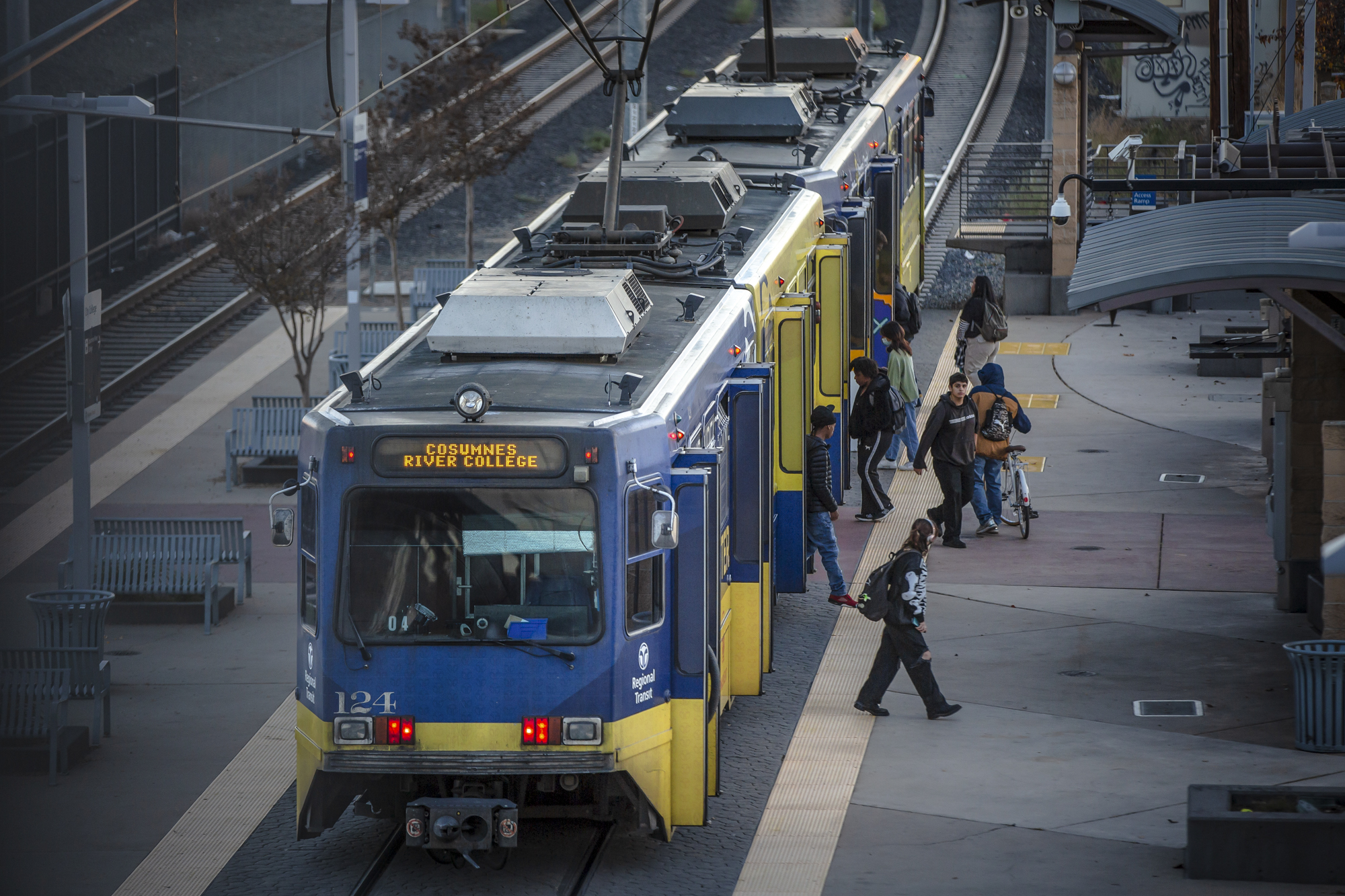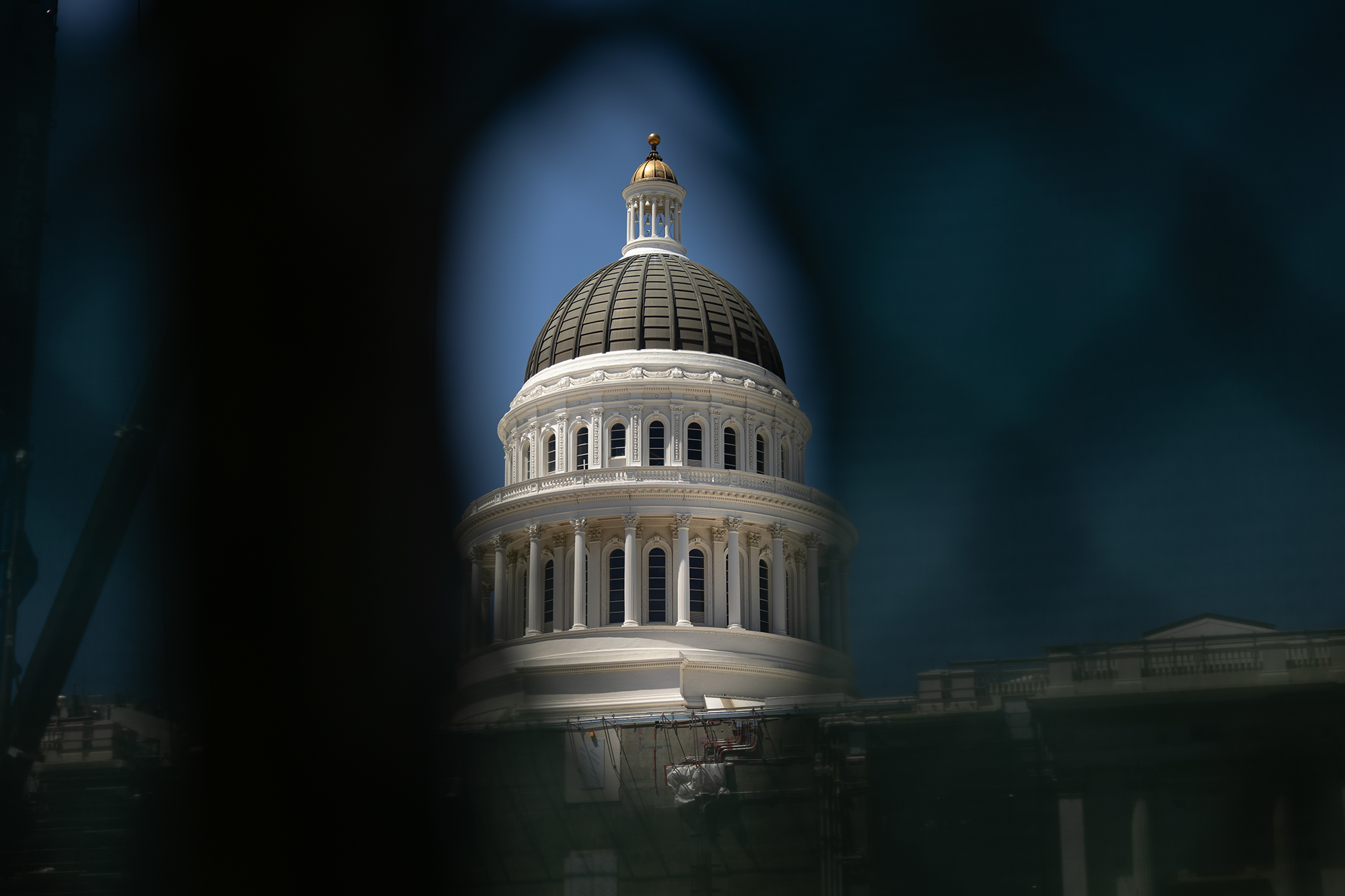
After the U.S. Supreme Court overturned Roe v. Wade in 2022, California’s Democratic leaders moved fast to shore up reproductive rights: They persuaded voters to enshrine the right to an abortion in the state constitution, approved a dozen bills strengthening abortion protections and passed a law in May to enable Arizona doctors to temporarily provide abortion services for their patients in California.
Collectively these moves serve as one example of California’s own rules acting as a sort of “regulatory backup” when judges begin overturning federal regulations and policies — an approach that may come into play in the near future, now that the high court’s recent rulings have upended existing federal policies, writes CalMatters’ Ben Christopher.
Because of three back-to-back rulings by the court’s conservative majority, federal regulations may soon be harder to enforce, more convenient to challenge and easier to strike down once they are challenged.
But it’s not clear how consequential these rulings will be, according to legal experts, especially in a state like California, which has laws that at times exceed what the feds require.
For instance, the state’s minimum wage is more than double the national minimum wage, and California has its own rules concerning overtime pay and extreme workplace heat (both indoor and outdoor). It also sets its own car pollution rules.
This is reassuring for those who do not agree with the Supreme Court’s recent decisions.
- Sean Donahue, a lawyer for the Environmental Defense Fund: “California is, in a way, better situated than some other states because it is big enough and it has enough expertise in state government to actually provide state law protections that can kind of compensate for weakened federal ones. That may not be true in some smaller states.”
But at this point, it’s difficult to know what federal rules are most vulnerable until they’re challenged in court. Climate change rules may be at risk in particular since there is little environmental legislation from Congress, and the Environmental Protection Agency has heavily leaned on a more than 50-year-old statute for its greenhouse gas emissions rules.
- Julia Stein, a UCLA environmental law professor: “We’ll probably see now a wave of litigation challenging regulations that many had thought of as being long-settled, and how that shakes out in terms of its application to California businesses and California residents and consumers, we just don’t know.”
Learn more about potential fallout from the Supreme Court decisions in Ben’s story.
CalMatters partner event: Join our friends at the San Francisco Public Press in conversation with veteran Washington Post investigative reporter Miranda Spivack about how to keep local government accountable. They’ll be discussing the secret deal-making between local governments and corporations Thursday, July 11, at 6 p.m. at the Kanbar Performing Arts Center in San Francisco. Register here.
Other Stories You Should Know
Evaluating Newsom’s presidential appeal

After President Joe Biden’s disastrous debate performance two weeks ago, Gov. Gavin Newsom has been frequently cited as a potential surrogate for the presidential nominee, along with other high-profile Democrats. But depending on who you ask, Newsom — who isn’t a stranger to speculation that he has his sights on the presidency — is either an astute politician with “generational talent,” the reason behind the state’s failings or somewhere in between.
So how would Newsom fare in a presidential race? CalMatters Capitol reporter Alexei Koseff and politics reporter Yue Stella Yu spoke with political consultants and experts about Newsom’s presidential prospects, including his strongest assets and glaring liabilities.
One thing that’s working for Newsom is his strong appeal with Democratic base voters, said Mike Madrid, a Republican political consultant.
- Madrid: “He understands the Democratic base better than almost any Democrat of his generation and that they are driven almost exclusively by cultural issues. … The more that Republicans say California is a liberal hellhole, that helps him. He wants that.”
At the same time, Newsom’s appeal in swing states remains a big question mark — especially considering that California’s progressive values are often subject to ridicule: A February poll by the Los Angeles Times found that nearly half of Republicans said California was not American.
- Jason Cabel Roe, a longtime GOP strategist in Michigan: “There’s just so many things that are going wrong in the state, and he owns all of them. He is identified with all of them.”
Read more about Newsom’s national prospects in Alexei and Stella’s story.
CA transit gets much-needed cash

Speaking of Newsom, the governor said Monday that California’s transportation agency, CalSTA, approved $1.9 billion towards transit operations or “capital improvements” for 22 public transportation agencies.
- Newsom, in a statement: “This vital funding … helps to advance California’s ambitious, world-leading climate goals. At the same time, we’re adding accountability measures that help put our state’s transit agencies on a path toward long-term stability.”
The money was initially set aside in 2023 as part of a $5.1 billion transportation package, but was frozen in April as Newsom and the Legislature hammered out the state budget to close a multibillion-dollar shortfall. With the first wave of the money released, the remaining funds of the transportation package are expected to be distributed through fiscal year 2027-28.
Michael Pimentel, California Transit Association’s executive director, said the money will help address “immediate priorities” for state transit agencies.
- Pimentel, to CalMatters: “First, the impending fiscal cliff for agencies across the state that relate to federal relief funds that have been largely expended by the agencies. And there is a need for backfill to address ridership that has not fully recovered, and the higher cost of operations in this inflation-tinged landscape.”
And on Tuesday, U.S. Sen. Alex Padilla said that the federal transportation department has granted nearly $234 million for 16 California transit authorities to purchase or lease zero-emission buses. The money could also go towards upgrading facilities, stations and chargers.
California is the country’s “leader by far” when it comes to zero-emission transit buses, according to Pimentel: They account for 10% to 15% of fleets in the state, and California has the highest number and percentage of zero-emissions buses.
And lastly: Missing the deadline

For the sixth year in a row, California is once again late in filing a comprehensive financial report — which provides insight into the state’s financial health and helps maintain its credit rating. Find out why from CalMatters Capitol reporter Sameea Kamal.
California Voices
CalMatters commentary is now California Voices, with a fresh look and new features. Check it out.
CalMatters columnist Dan Walters is away.
Other things worth your time:
Newsom will take your Biden questions (and try your doughnuts) // The New York Times
CA Rep. John Garamendi says he has a rare form of blood cancer // Los Angeles Times
Steve Garvey has been quiet since the March primary. So what was he doing in Israel? // Los Angeles Times
Despite a persistent heat wave, CA’s grid is ‘stable’ // The San Diego Union-Tribune
CA’s inmate firefighter crews are dwindling just as the state starts to burn // Los Angeles Times
See how CA cops are spending $50M on ‘wellness’ // The Sacramento Bee
Incarcerated women plead for help after Central Valley prison death amid extreme heat // KQED
Measles warning: Contagious person traveled to South Bay and Santa Cruz // The Mercury News
Officials cheered progress after latest homeless count, but little has changed for unhoused Latinos // LAist

